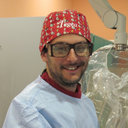Neutropenia in patients treated with thienopyridines and high-dose oral prednisone after percutaneous coronary interventions.
Ключевые слова
абстрактный
BACKGROUND
Oral treatment with prednisone has demonstrated efficacy in reducing restenosis after percutaneous coronary interventions (PCI). However, administration of steroids at high dose may raise concerns in terms of applicability and tolerability. Monitoring the occurrence of possible side-effects is therefore mandatory.
METHODS
Secondary effects of oral prednisone in this setting is analyzed. The "expected" secondary effects of the steroid treatment are described, together with the "unexpected" occurrence of likely drug-induced neutropenia observed in patients prescribed prednisone and thienopyridines simultaneously after PCI.
RESULTS
Two-hundred and twenty patients were monitored for the occurrence of side-effects of the prednisone therapy. Twenty-eight patients (14%) had side-effects likely related to the prednisone treatment: gastric pain (4%), increment of arterial pressure needing upgrading of antihypertensive treatment (4%), edema (1.8%), and concomitant infections (1.4%). In three patients (1.4%), agranulocytosis was detected at the time of the routine blood cell count scheduled 4 weeks after PCI in otherwise asymptomatic patients. Neutropenia subsided completely after withdrawal of prednisone and thienopyridine in all cases and the blood cell formula normalized within 3 weeks.
CONCLUSIONS
Side-effects of oral prednisone given after PCI to reduce restenosis occur in less than 15% of patients. Complaints are mild and reversible and can be easily managed with adjunctive diuretic and antacid drugs. The occurrence of agranulocytosis after prednisone had never been reported before, but was observed in 1.4% of our patients receiving simultaneously a thienopyridine. To explain such an unusual event we propose the hypothesis of a possible metabolic interaction between prednisone and thienopyridines.



